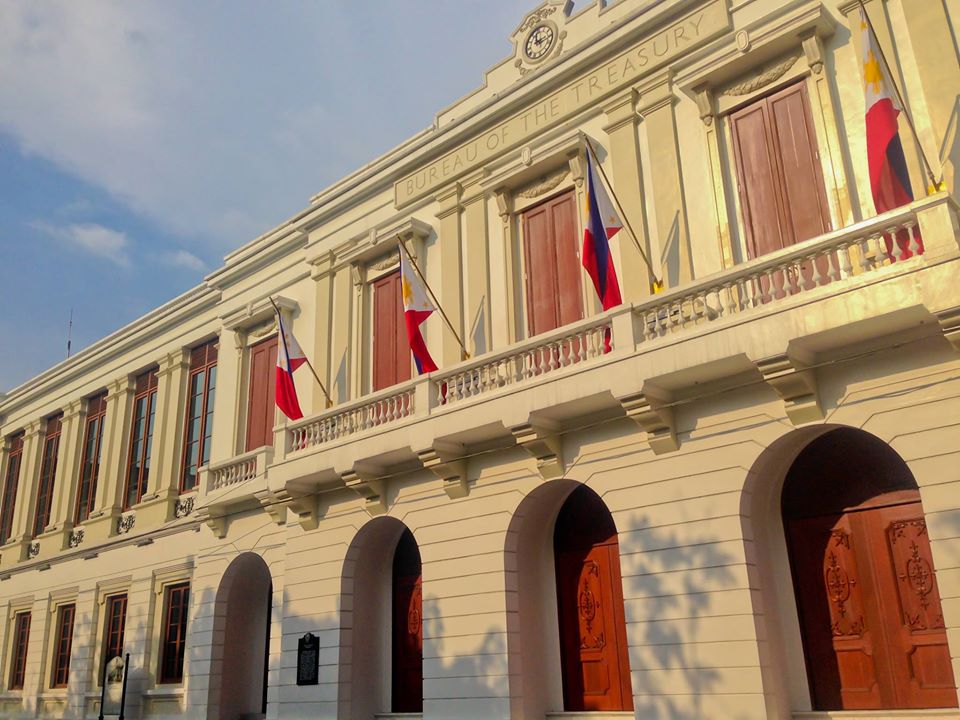MANILA, Philippines—T-bill rates rose across-the-board on Monday (June 13) as local creditors sought higher yields ahead of the anticipated new round of aggressive interest rate hikes by central banks here and abroad.
In all, the Bureau of the Treasury (BTr) borrowed P14 billion from the domestic debt market through short-dated bills, short of the P15 billion it wanted to raise.
The BTr awarded P5 billion in the benchmark 91-day treasury bills at an average rate of 1.572 percent, up from 1.44 percent last week.
It borrowed another P5 billion via 182-day securities at 1.934 percent, higher than the 1.834-percent yield previously.
For the longest 364-day T-bills, the BTr capped the bids it accepted to P4 billion despite offering a similar P5 billion as in the two shorter tenors. The BTr awarded one-year debt at 2.325 percent per annum, up from last week’s average annual yield of 2.297 percent.
Government securities eligible dealers (GSEDs) offered to lend the BTr a total of P29.7 billion or nearly double the amount it was supposed to borrow.
“Rates moved north with higher inflation, particularly in the US, becoming persistently necessitating a more aggressive rate hike,” National Treasurer Rosalia de Leon said.
With 40 year-high US inflation rates being posted of late, markets were betting of at least 50 basis points (bps) — if not up to 75 bps — of rate increase by the US Federal Reserve this week.
“Locally, the Bangko Sentral ng Pilipinas (BSP) had signaled to move this coming Monetary Board policy meeting [on June 23] with a 25-bp hike,” De Leon added, citing recent pronouncements from BSP Governor Benjamin Diokno, the incoming finance chief of the Marcos administration, as well as Monetary Board member Felipe Medalla, who will assume Diokno’s unfinished term as central bank chief.
In a report last Friday (June 10), investment banking giant Goldman Sachs raised its 2022 headline inflation forecast for the Philippines to 5.3 percent from 4.6 percent previously “on the back of higher global oil prices as well as imported food prices.” The rate of increase in prices of basic commodities hit a 3.5-year high of 5.4 percent in May.
Goldman Sachs Economics Research’s higher full-year inflation projection was despite “[having] taken into account the reduction in corn tariffs and extension of low tariffs for other commodities till end of 2022,” which the government had said were supposed to temper upward price pressures on food and oil products.
“We expect core inflation (excluding food and energy) will also accelerate to 3 percent year-on-year by end-2022, bringing the annual average to 2.4 percent,” it added.
London-based think tank Capital Economics also last Friday noted that Medalla, in a Bloomberg interview last week, “all but confirmed that interest rates would be raised at the central bank’s next two meetings in June and August, and left open the possibility of further hikes thereafter.”
“Whereas we think the BSP will end its tightening cycle in August, financial markets and the consensus are expecting the tightening cycle to continue into 2023,” Capital Economics senior Asia economist Gareth Leather said.
“Higher energy prices have been the key factor behind the jump in inflation, and the recent rise in global oil prices poses an upside risk to our forecasts for this year,” Leather said.
“But if we are right that oil prices will drop over the coming months on the back of an increase in output from OPEC [Organization of the Petroleum Exporting Countries] and a slowdown in global demand growth, worries about inflation should start to ease. By the time of the BSP’s September meeting, there should be clear signs that the worst is over for inflation,” Leather added.
For Leather, “there isn’t much sign of second-round effects that might cause inflation concerns to linger longer.”
“Core inflation (which strips out food and energy-related costs) is low. Meanwhile, labor market figures published (last Friday) suggest there is still some slack left in the labor market, which should help keep wage pressures in check,” Leather added, citing the pandemic-low unemployment rate of 5.7 percent in April, which inched closer to pre-pandemic levels.
